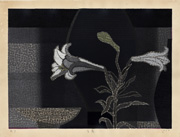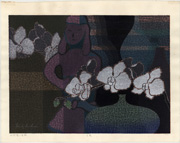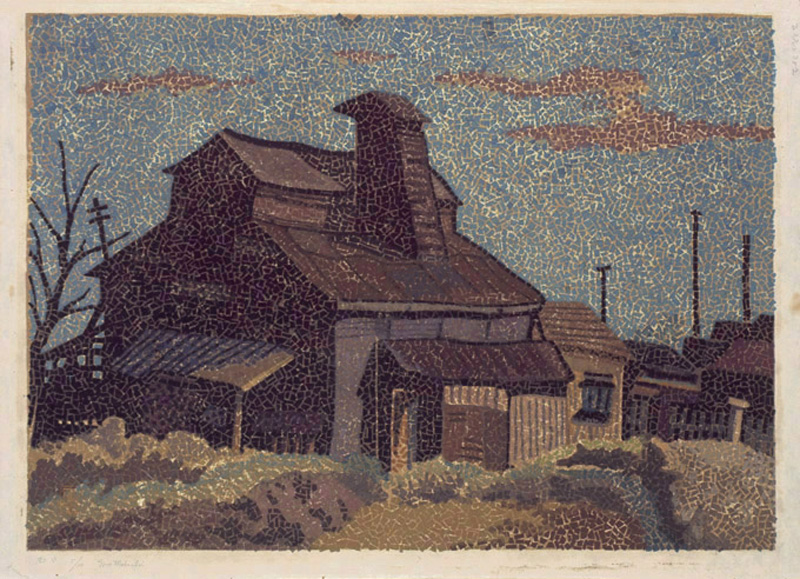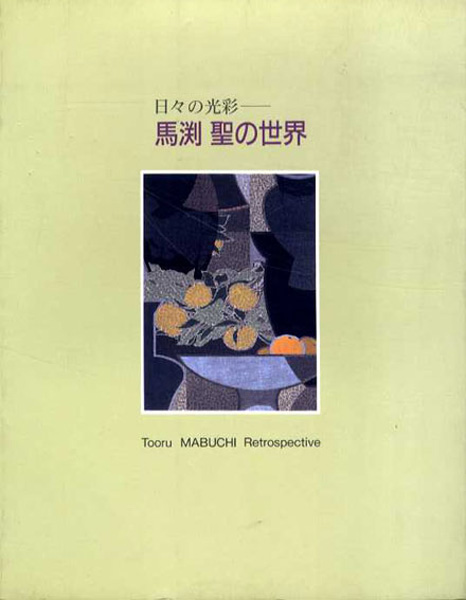Biographical Data
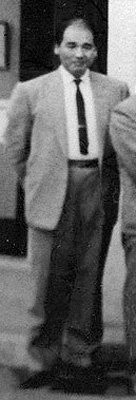 photo of artist c. 19633 photo of artist c. 19633 | BiographyMabuchi Tōru (Mabuchi Thoru*) 馬渕聖 or 馬淵聖 (1920-1994) * This spelling of his given name was often used by the artist.Sources: Modern Japanese Prints: An Art Reborn, Oliver Statler, Charles E. Tuttle Company, 1956; Modern Japanese Prints 1912-1989, Lawrence Smith, British Museum Press, 1994; Independent Administrative Institution National Institutes for Cultural Heritage https://www.tobunken.go.jp/materials/bukko/10565.html and as footnoted. Born on January 12, 1920 in Tokyo’s Kyobashi district, Mabuchi learned wood engraving at an early age from his father Mabuchi Rokutarō, who was to go on to become a pioneer in airbrush technique in the field of commercial art. His parents encouraged Tōru to become an artist, sending him to a middle school that would prepare him for this career. Commenting on his schooling, Mabuchi told Oliver Statler, "After middle school, I entered the design course in the government art school [Tokyo University of Fine Arts] at Ueno. This course included oil painting and drawing, but it emphasized the decorative and applied arts. My father wanted me to be an artist, but he wanted me to be able to earn a living too.”2 Tōru had been making woodblock prints since grammar school and had developed a |
After graduation in December 1941 he was drafted into the army, first assigned as an Imperial Palace Guard and later as a map and chart maker, keeping him out of combat.
Post-war, Tōru took over his father’s commercial design business which provided both financial security and the time required to pursue his passion for his unique form of “mosaic” print making which involved cutting small pieces of thin wood then gluing them to a woodblock in a mosaic-like pattern. Mabuchi came to this process through his interest in Byzantine mosaics and related to Statler in 1956 that he first “started by attempting the pointillist technique of juxtaposing spots of primary colors, but it didn’t work, so I fell back on the mosaic effect. The jury at the government show always argues about accepting these prints because the blocks aren’t carved, but so far they’ve been accepted.”4 His print making process is intricate and time consuming involving as many as 30 to 50 printing stages.5
西日 Setting Sun, 1953
A print using only Mabuchi's mosaic technique created early on in his post-war career.
It should be noted that Mabuchi also employed more traditional block carving in his work combining that with his mosaic technique.
While his subject matter originally focused on landscape it quickly expanded to incorporate still life, which comprises the bulk of his work.
Lawrence Smith writing in Modern Japanese Prints 1912-1989 in 1995 stated, “Mabuchi’s unusual technique produces a surface of great richness suitable to still-life subjects…”6 and James Michener writing in The Modern Japanese Print - An Appreciation in 1968 noted that Mabuchi “has developed the most distinct technique used by any of the moderns. His prints are big, more expensive than others, and artistically rewarding.”7 While his most impressive prints are big, Mabuchi also designed small prints and ex libris, often signing them “MA” or "T. MABOUCHI".
Mabuchi was active in numerous print organizations as a member and exhibitor, including the Kōfukai, the Nipponkai (Japan Print Association, which he was to become chairman of in 1981), the Nitten Art Association, the Ashinokai Art Association and the Nihon Hanga Kyōkai (which he had left earlier in his career). He also exhibited at the important 3rd International Biennial Exhibition of Prints in Tokyo. He taught printmaking at both Tokyo Women’s college and Hiroshima University and authored several articles and a book on woodblock printmaking.8 In 1971 he was commissioned by the Imperial Household Agency to make for prints for the Suzaki Detached Palace, Shimoda.
His work is held by Boston Museum of Fine Arts, British Museum, Carnegie Museum of Art, Cincinnati Art Museum; New York Museum of Modern Art; Art Institute of Chicago; Portland Art Museum, The National Museum of Modern Art, Kyoto and the Yokohama Museum of Art, among others.
Mabouchi passed away on March 25, 1994 due to heart failure.
In 1998 a retrospective of his work was held at the Chigasaki Museum of Art in Kanagawa prefecture, where he had moved in 1975 to be close to his father. The museum holds over 150 of his works in their collection.9
Cover of catalog from the 1998 Chigasaki Museum of Art retrospective
"Daily Brilliance ― The World of Mabuchi Tōru" 日々の光彩― 馬渕 聖の世界
1 Modern Japanese Prints: An Art Reborn, Oliver Statler, Charles E. Tuttle Company, 1956, p. 175.
2 Ibid, p. 173-174.
3 Cropped from a photograph appearing on the website of the Kofukai https://kofu-kai.jp/100/branches/kanagawa.html
4 Modern Japanese Prints: An Art Reborn, Statler, p. 175.5 website of John Fiorillo https://www.viewingjapaneseprints.net/texts/sosaku_hanga/mabuchi_toru.html
6 Modern Japanese Prints 1912-1989, Lawrence Smith, British Museum Press, 1994, p. 29.
7 The Modern Japanese Print - An Appreciation, James Michener, Charles E. Tuttle Co., 1968, p. 12.
8 馬淵聖『木版画のつくり方 初歩から多色刷りまで』"How to make woodblock prints from the beginning to multicolor printing", 1975
8 馬淵聖『木版画のつくり方 初歩から多色刷りまで』"How to make woodblock prints from the beginning to multicolor printing", 1975
9 Chigasaki Museum of Art website http://www.chigasaki-museum.jp/files/5715/4415/1952/71dbdd9bde1aa73136f56d877552f420.pdf
last update:
11/24/19 created
